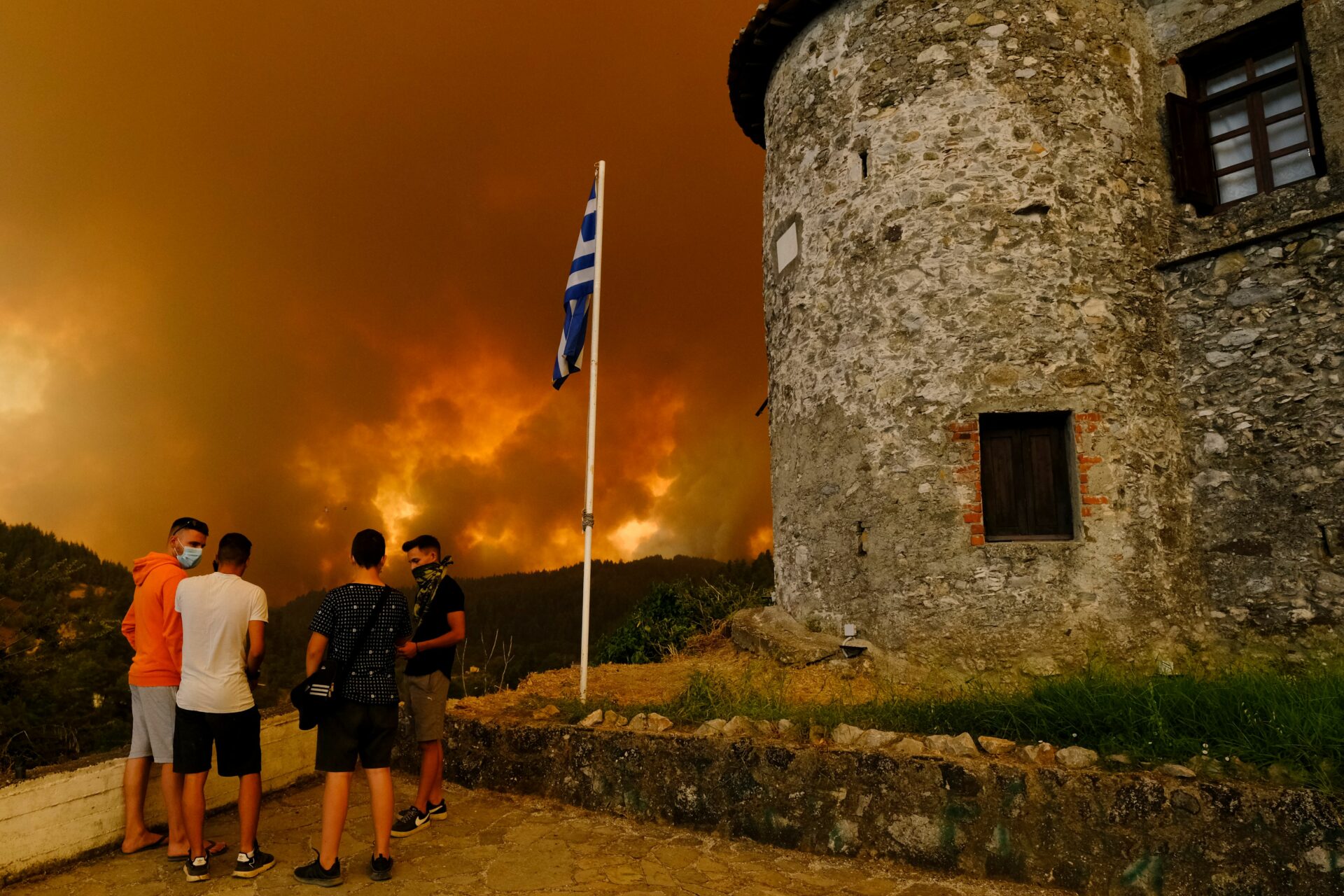Europe has this summer been hit by heatwaves, wild fires and droughts. After a summer of extreme weather events across the world, a new United Nations University report looks at how the right solutions can reduce the risk of such hazards turning into full-blown disasters, or in some cases eliminate them altogether.
Solutions, mitigation and adaptation measures are already being implemented around the world to address risks, but interconnectivity is not yet placed at the heart of solution design and implementation, according to the report.
The United Nations University - Institute for Environment and Human Security (UNU-EHS) operates as a think tank and is also engaged in education on Master level in cooperation with the University of Bonn.
In the report, UNU-EHS analyzed 10 disasters from around the world, which were selected to be representative of a larger global issue, to identify shared root causes and drivers of disasters, and came up with several solutions which can prevent or reduce a number of disaster risks.
In the past year alone, disasters caused the loss of around 10,000 human lives and over $280 billion in damages worldwide. The Interconnected Disaster Risks report is an annual science-based report for the general public, first published in 2021.
The new report, launched on Wednesday (31 August) ahead of the UN Climate Conference (COP27) in November in Sharm el-Sheikh, Egypt, demonstrates that by looking below the surface and identifying the drivers that cause disasters to develop, such as deforestation or urbanization, the risk of disasters can be reduced before they occur.
For example, deforestation leads to soil erosion, where a lack of trees and roots means that there is no protection from wind and rain and the soil is easily washed or blown away.
This creates ideal conditions for multiple disasters, such as the devastating landslides during the Haiti earthquake, the formation of sandstorms in southern Madagascar and the sedimentation of water reservoirs contributing to the Taiwan drought, leading to lives lost or people’s homes and income opportunities being destroyed.
“The good news is that just as the disasters are interconnected, so are the solutions,” stated Dr. Jack O’Connor, Senior Scientist at UNU-EHS and Lead Author of the report.
“One type of solution can prevent or reduce a number of different disaster risks, and through our research we were able to identify solutions which can prevent or drastically reduce the impacts of disasters to help us save lives and avoid costly damages.”
The report analyses 10 disasters from 2021/2022, which were selected to be representative of a larger global issue, and include the British Columbia heatwave, Haiti earthquake, Hurricane Ida, Lagos floods, Mediterranean wildfires, southern Madagascar food insecurity, Taiwan drought, Tonga volcano eruption, vanishing vaquita (a fish threatened of extinction) and wandering elephants (in China).
Shared root causes, drivers and solutions
The report lists Insufficient risk governance, Undervaluing environmental costs, and Inequality of development and livelihood opportunities as the most common root causes in almost all disasters. Climate change through human-induced greenhouse gas emissions is also a common root cause but seems to be less important than current economic and social systems.
“This is not a correct interpretation,” explained Jack O’Connor in an interview with The Brussels Times. “The report doesn’t talk so much about climate change but it’s of course all over in the report. If we would have focused on climate change, it would often been more difficult to specify the solutions as to how deal with the impacts of disasters caused by global warming.”
The sample of 10 disasters were chosen after an intensive selection process. “We wanted each story to add something to the bigger picture. By analyzing different types of disasters, we can clearly identify the links between them and their interconnectivity as regards root cases and solutions.”
How do you explain that seemingly different disasters are interconnected and can be dealt with by common solutions?
“We analyzed the underlying factors for each case, first looking at the deeper root causes and then the more direct drivers of disaster, such as deforestation and urbanisation” he replied. “Next, we briefly looked at how one disaster can influence another, either where one disaster directly contributes to the hazard of another or where one disaster increases the exposure or vulnerability of people or places.”
“Additionally, we listed similar impacts shared among different disasters and assessed where they overlap to create future risks. Lastly, we looked at solutions that could help address some of the root causes, drivers and impacts of each event and looked for similarities and themes that emerged across solutions.“
Each disaster is shown to be caused by a combination of different root causes that overlap at a specific point in time and space. “Take for example earth quakes and wildfires - their causes aren’t often seen in the economic-social systems. There is therefore a similar approach to solutions. It doesn’t mean that there is only one solution. We need to use different solutions in combinations.”

Mediterranean wildfire. To prevent the spread of wild fires into megafires, the report proposes among others dealing with underbrush vegetation in the forests and fuel-free open spaces next to urban areas. Deforestation leads to soil erosion, where a lack of trees and roots means that there is no protection from wind and rain and the soil is easily washed or blown away.
On the positive side, the report states that hazards such as heat waves, floods, droughts, wild fires, and earthquakes, do not necessarily have to turn into disasters.
Catastrophic climate change can be prevented by a policy towards climate neutrality and zero net emissions. But today there is also a focus on how to mitigate hazards and extreme weather events that are caused by climate change, according to Dr. O’Connor.
The right of nature
While the majority of disasters affected the lives and livelihoods of people, the report deals also with preserving ecosystems and “the right of nature”.
“We didn’t want to forget the ocean and the issue of biodiversity," Dr O’Connor, himself an ecologist and expert on coastal ecosystems, explained. “As regards the vaquita, the most endangered marine mammal, the problem is overfishing, linked to irregular trade, and a matter of regulation and enforcement. Every extinction of a species is a loss for mankind.”
The example of “wandering elephants” is taken from China where it, contrary to its demand for ivory causing poaching in Africa, has been successful in preserving local elephants. But due to urbanization, drought, and the loss of habitats for elephants, a herd of Asian elephants started to migrate causing human-elephant conflict.
The legacy of colonialism is also a cause of disasters, such as for example the earthquakes in Haiti, which are described as a disaster 300 years in making because of the continued effects of colonial exploitation by France, which indebted the country after its liberation from slavery.
Colonialism has of course nothing to do with earthquakes but their impact is worsened by the colonial neglect leading to inefficient infrastructure and governance and ripples through time, Jack O’Connor explains. There are also other disasters in making that can be linked to European colonialism.
Ecocide as a driver of disasters is not specifically discussed in the report but the implications are the same and the report deals with ecocide-related disasters, he says. There is an international campaign for the recognition of ecocide as an international crime, an issue which was discussed at the previous climate change conference in Glasgow.
M. Apelblat
The Brussels Times

